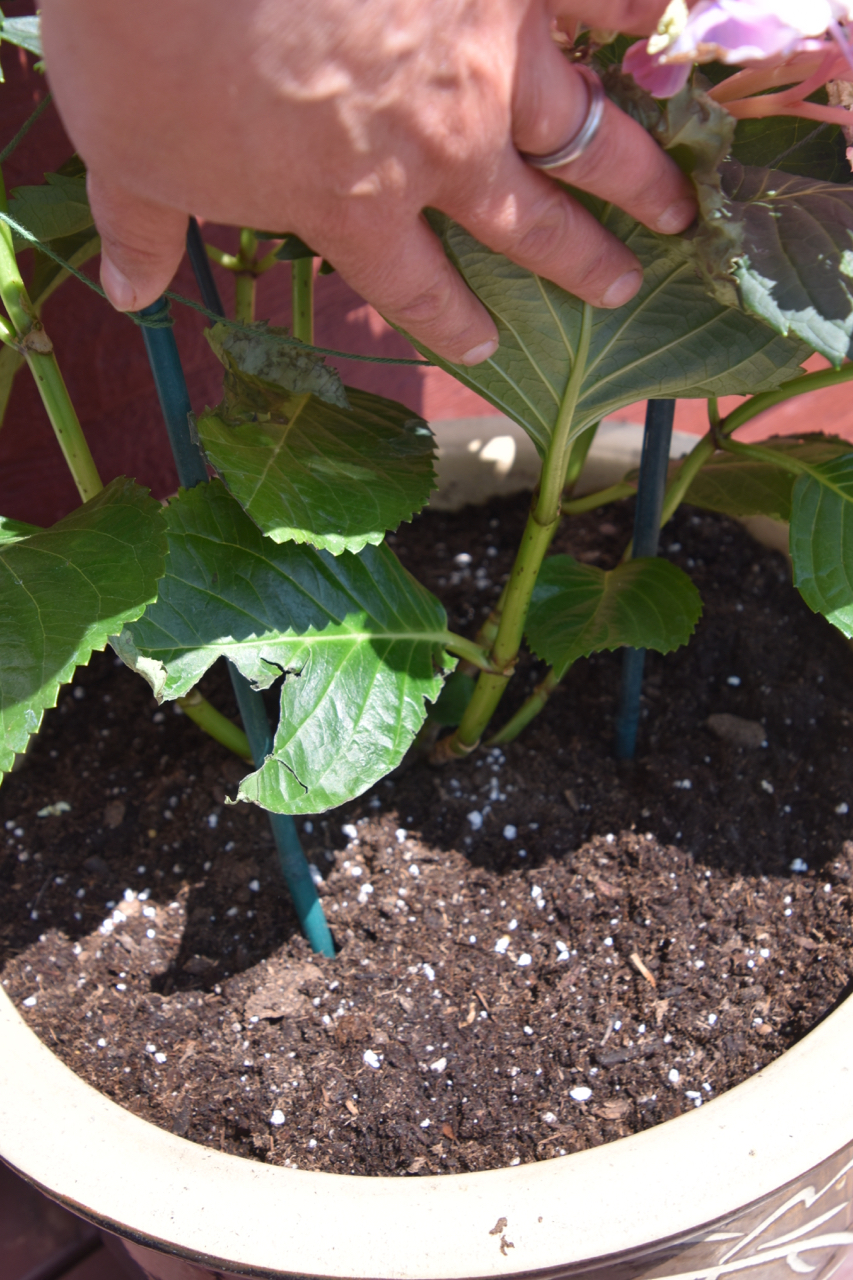Hydrangea envy is a reality, particularly when some people grow enormous, glorious plants with massive blooms, seemingly without effort. The good news is anyone can have them at their home, even if the only space you have is a corner on your patio. When you have the right variety and provide conditions they prefer, be ready to enjoy big blossoms outside your door. Amy Grisak is the PlantersPlace.com blogger who writes Pest Patrol. In this article, she explains how to grow hydrangeas in containers.
Choose the right variety
Many of the standard garden types of hydrangeas grow 5 – 8 ft. tall, but to find one that fits in a container look for cultivars of Hydrangea serrata or Hydrangea macrophylla such as ‘Bloomstruck’ by Endless Summer. One plant will easily fill a large container. For extra show, try tucking in a few annuals around the base of the plant for a pop of color.
Pick a pot
Hydrangeas require more water than many other container plants, so choose at least an 18 – 20 inch pot. It will keep the plant from wilting during even the hottest summer days. Hydrangeas are perennials, so by providing a larger container from the start, you won’t have to transplant it to larger one quite as often.
I do not recommend placing gravel or another substrate in the bottom of the pot. At one time, doing this was believed to allow proper drainage, but in reality, it tends to promote root rot. Make sure the container has adequate holes in the bottom for drainage. Fill the pot with soil and then give it a good soak. If the water runs out the bottom, the holes are adequate.
Use a high quality potting mix, and for gardeners in particularly arid climates, opt for the moisture-retaining types. Such soils help to hold onto water by not allowing it to evaporate quite as readily as a standard potting mix.
Plant and place your hydrangea
When planting your hydrangea in a container, simply tap the plant out of its existing pot and bury it so the top of the soil is at the level it was in the original container. Water it well. If you are not using a potting mix that already has fertilizer in it, give it a dose of fertilizer. You might want to try sprinkling a slow-release fertilizer like Osmocote® around it. Mix it into the first 1/2 inch of the soil. With Osmocote, you don’t have to think about it for the rest of the summer, which is always the easiest way to go.

Planting the hydrangea – photo by Amy Grisak
Unlike so many other brilliantly colored flowers, hydrangeas do not do well in full, blazing sun. Choose a location that receives morning sun with relief from the afternoon heat in dappled shade. If the plants are in the sun all day, they simply won’t bloom. This is particularly important in southern regions where the heat can quickly send the plants into dormancy.
For most of us, this means an eastern exposure is the best. Of course, that can change to some degree throughout the summer. But, that’s the beauty of growing them in a container. Simply move them to where they are the most happy. If a hot spot is your only option, one way to mitigate the situation is to place other tall plants in between the sun and your hydrangea. Or you can use a trellis of some type to create your own shade. The trellis can also serve as double duty to grow sweet peas, moon flowers, or any number or ornamental climbing plants.




